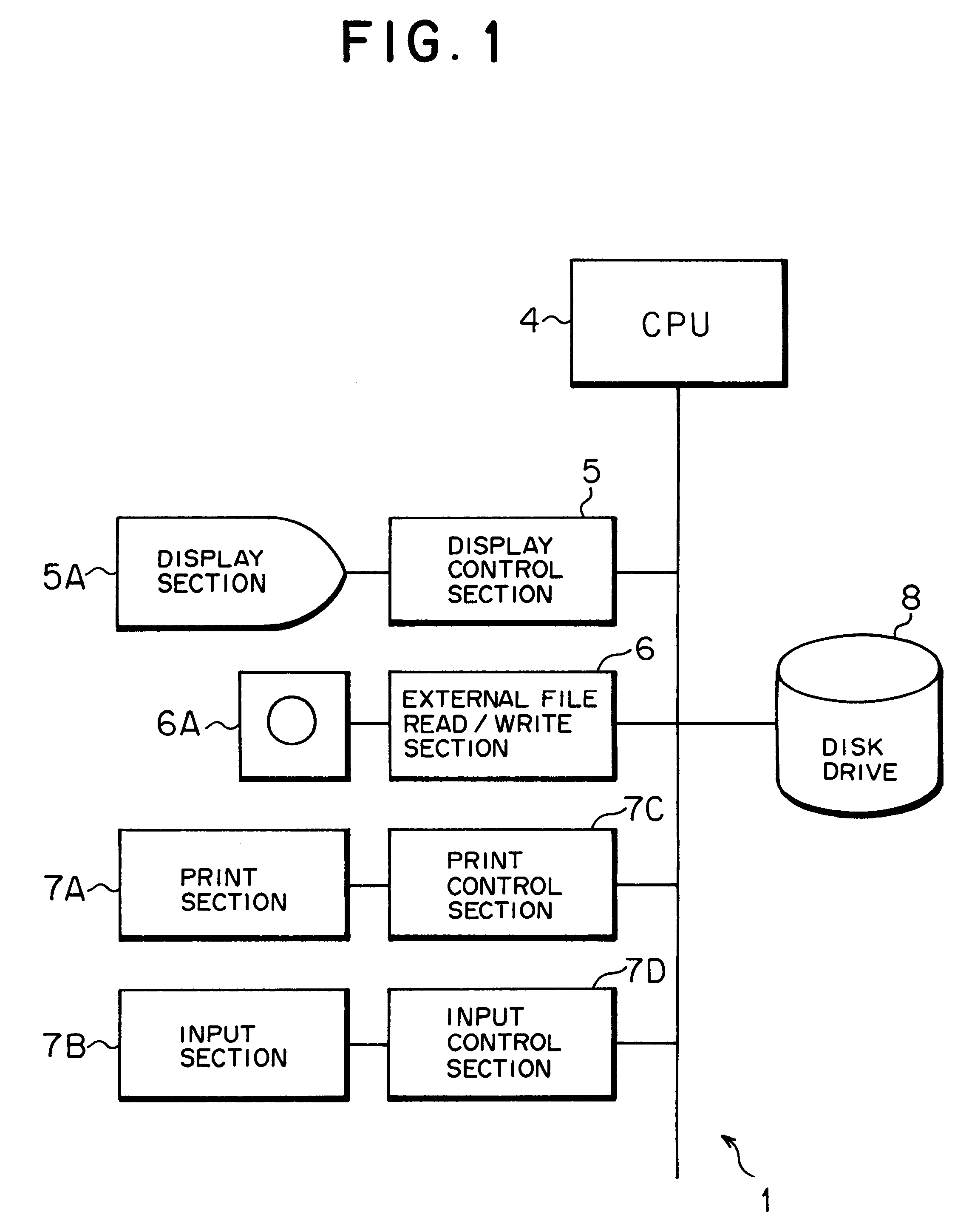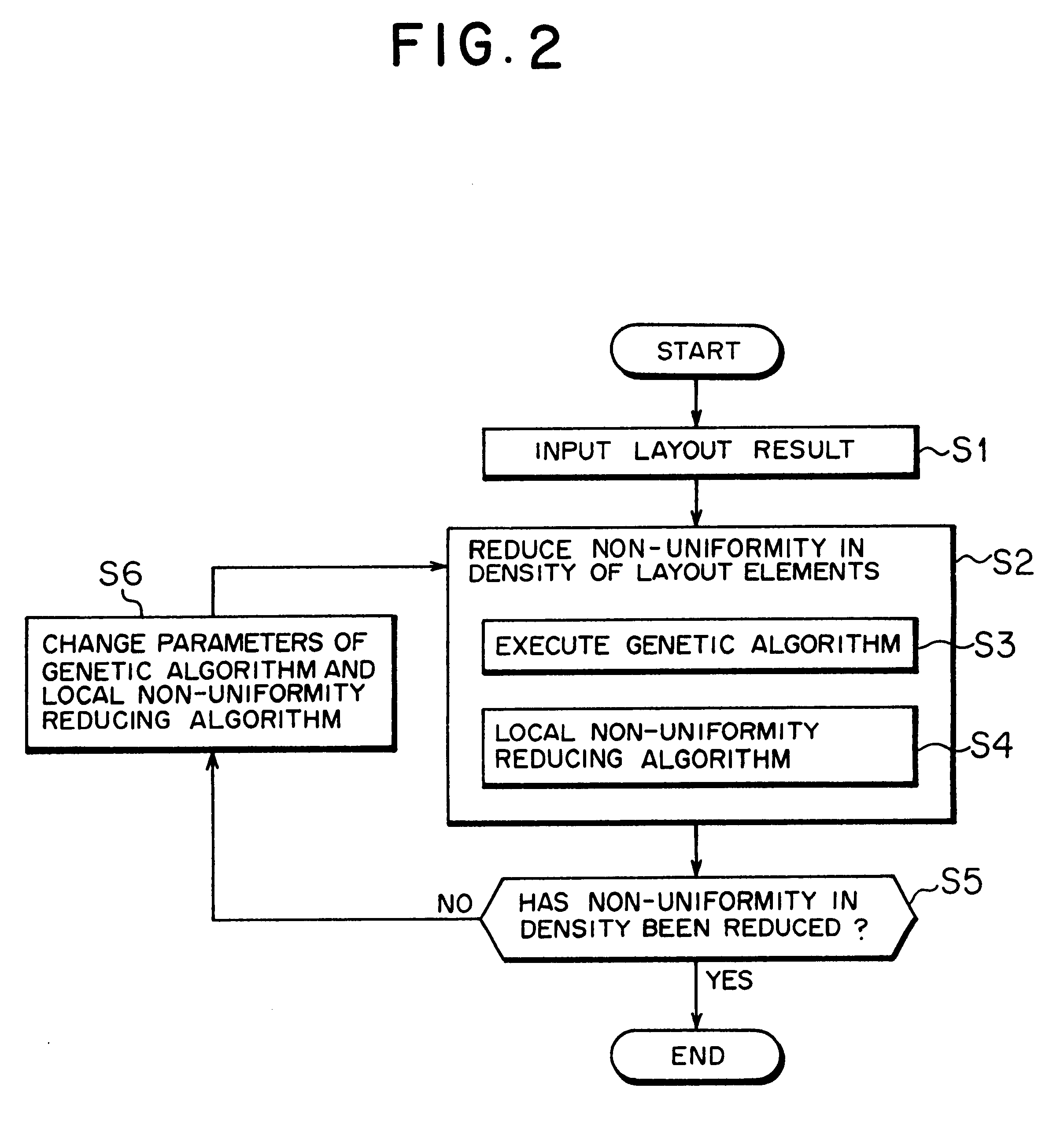Method for solving a layout optimization problem, and computer-readable recording medium having a layout optimization problem processing program recorded thereon
a layout optimization and processing program technology, applied in the field of layout optimization problems, can solve the problems of removing or reducing the non-uniform density of the layout elements, and reducing the non-uniform density of the plurality of elements
- Summary
- Abstract
- Description
- Claims
- Application Information
AI Technical Summary
Benefits of technology
Problems solved by technology
Method used
Image
Examples
first embodiment
(b2) Description of the First Embodiment
A layout optimization problem processing method according to a first embodiment will now be described.
Under the layout optimization problem processing method according to the first embodiment, a genetic algorithm (GAc) is executed in the first algorithm executing step (step S3 shown in FIG. 2), and an algorithm to which the hydrodynamic analogy is applied is executed as a local layout unbalance reducing algorithm in the second algorithm executing step (step S4 shown in FIG. 2).
The genetic algorithm (GAc) executed in the first embodiment is intended to directly reduce non-uniformity in density of the layout elements 9 while the result of arrangement of the layout elements 9 is read a chromosome.
More specifically, the layout optimization problem processing method according to the first embodiment is intended to effectively reduce non-uniformity in density of the layout elements 9 by application of the genetic algorithm (GAc) to each of the chrom...
second embodiment
(b4) Description of Second Embodiment
A layout optimization problem processing method according to a second embodiment of the present invention will now be described.
Under the layout optimization problem processing method according to the second embodiment, the genetic algorithm (GAp) is executed in the first algorithm executing step (i.e., step S3 shown in FIG. 2), and the algorithm which is described in the first embodiment and to which the hydrodynamic analogy is applied is executed as the local layout unbalance reducing algorithm in the second algorithm executing step (i.e., step S4 shown in FIG. 2).
The genetic algorithm (GAp) executed in the second embodiment is intended to optimize the width to which the layout region 10 is divided by the local layout unbalance reducing method (LO).
More specifically, the layout optimization problem processing method according to the second embodiment is intended to optimize the division of the layout regions 10 to thereby efficiently reduce non...
third embodiment
(b6) Description of the Third Embodiment
A layout optimization problem processing method according to a third embodiment of the present invention will now be described.
Under the layout optimization problem processing method according to the third embodiment, the genetic algorithms (GAp and GAc) and the local layout unbalance reducing method (LO) are used in combination by executing the genetic algorithm (GAc) in the first algorithm executing step (i.e., step S3 shown in FIG. 2) while the genetic algorithm (GAp) is executed, and by executing the local layout unbalance reducing algorithm in the second algorithm executing step (i.e., step S4 shown in FIG. 2).
More specifically, under the layout optimization processing method according to the third embodiment, at the time of determining an optimum solution through use of the genetic algorithm (GAp), the genetic algorithm (GAc) is executed upon creation of each generation or upon creation of a plurality of generations. Further, the local l...
PUM
 Login to View More
Login to View More Abstract
Description
Claims
Application Information
 Login to View More
Login to View More - R&D
- Intellectual Property
- Life Sciences
- Materials
- Tech Scout
- Unparalleled Data Quality
- Higher Quality Content
- 60% Fewer Hallucinations
Browse by: Latest US Patents, China's latest patents, Technical Efficacy Thesaurus, Application Domain, Technology Topic, Popular Technical Reports.
© 2025 PatSnap. All rights reserved.Legal|Privacy policy|Modern Slavery Act Transparency Statement|Sitemap|About US| Contact US: help@patsnap.com



